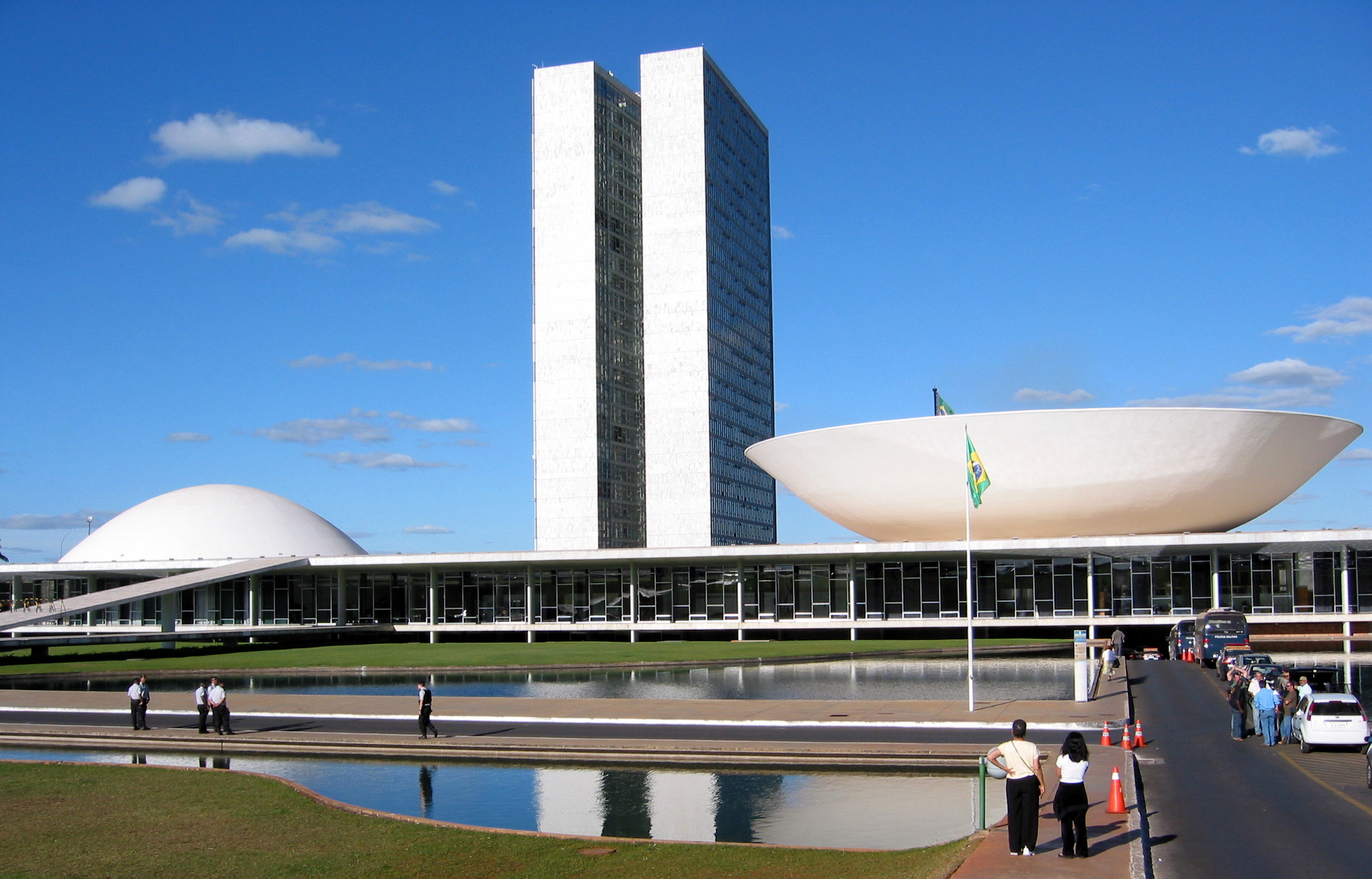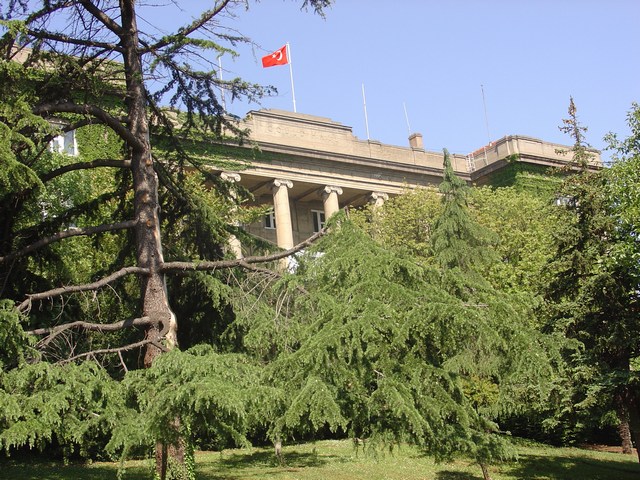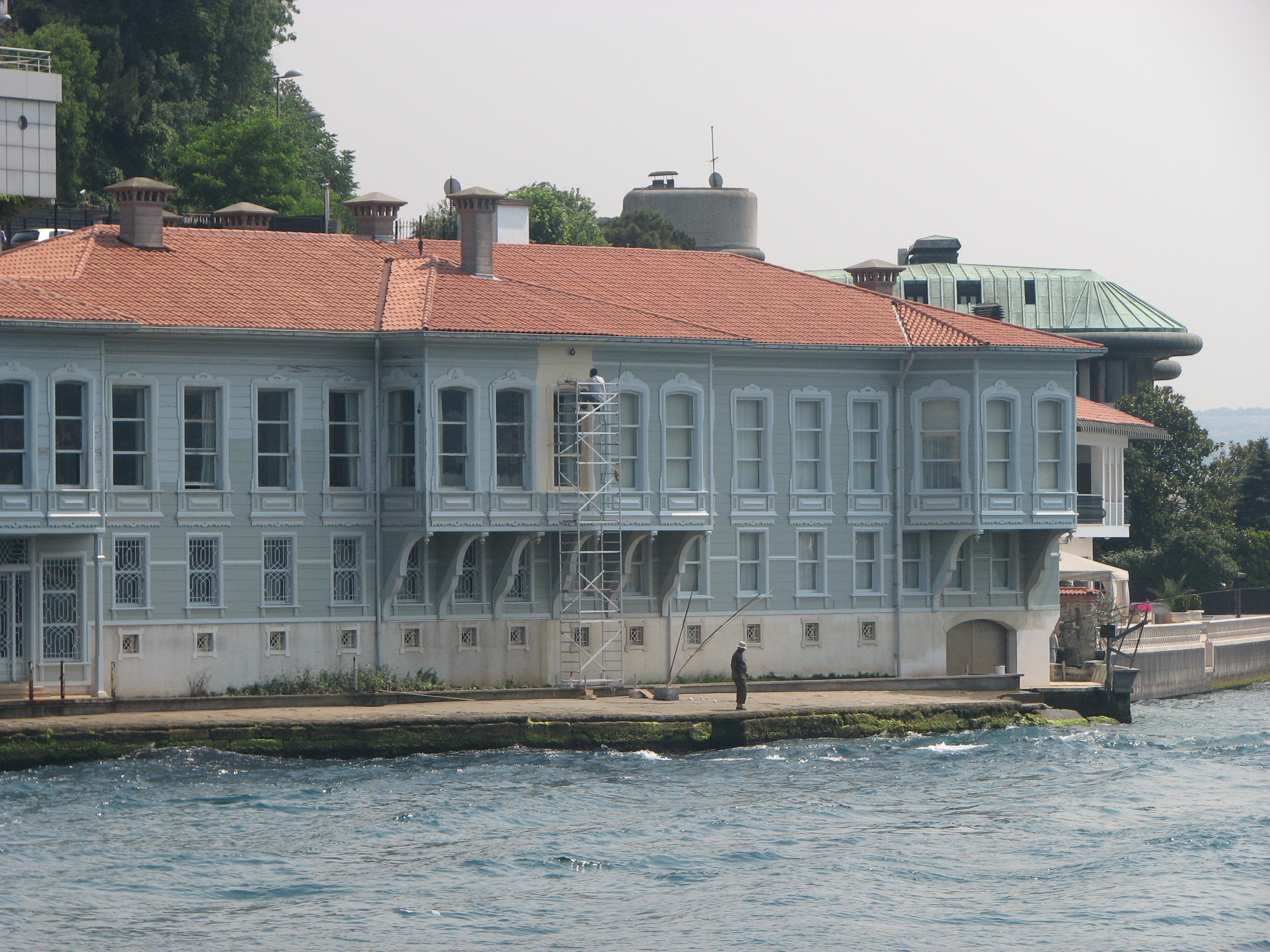|
Yalı (residence)
A yalı ( tr, yalı, from Greek ''yialí'' (mod. ''yialós''), literally "seashore, beach") is a house or mansion built right on the waterside (almost exclusively seaside, particularly on the Bosphorus strait in Istanbul) and usually built with an architectural concept that takes into account the characteristics of the coastal location. A family who owned a waterside residence would spend some time in this usually secondary residence located at the sea shore, as opposed to the '' konak'' ("mansion", aside from the term's use to refer to buildings with administrative functions) or the ''köşk'' ("pavilion", often serving a determined practical purpose, such as hunting, or implying a temporary nature). Thus, going to the "yalı" acquired the sense of both going to the seaside and to the house situated there. In its contemporary sense, the term "yalı" is used primarily to denote those 620 waterside residences constructed during the 18th, 19th, and 20th centuries and sprinkled al ... [...More Info...] [...Related Items...] OR: [Wikipedia] [Google] [Baidu] |
Wooden Building On The Bosphorus
Wood is a porous and fibrous structural tissue found in the Plant stem, stems and roots of trees and other woody plants. It is an organic materiala natural composite material, composite of cellulose fibers that are strong in tension and embedded in a :wikt:matrix, matrix of lignin that resists compression. Wood is sometimes defined as only the secondary xylem in the stems of trees, or it is defined more broadly to include the same type of tissue elsewhere such as in the roots of trees or shrubs. In a living tree it performs a support function, enabling woody plants to grow large or to stand up by themselves. It also conveys water and nutrients between the leaf, leaves, other growing tissues, and the roots. Wood may also refer to other plant materials with comparable properties, and to material engineered from wood, or woodchips or fiber. Wood has been used for thousands of years for fuel, as a construction material, for making tools and weapons, furniture and paper. More rec ... [...More Info...] [...Related Items...] OR: [Wikipedia] [Google] [Baidu] |
Sarıyer
Sarıyer () is the northernmost district of Istanbul, Turkey, on the European side of the city. It consists of the neighbourhoods of Rumelifeneri, Tarabya, Yeniköy, İstinye, Emirgan and Rumelihisarı. Sarıyer also administers the Black Sea coast to the west of the mouth of the Bosphorus, including the neighbourhood of Kilyos. It borders Eyüp to the northwest, Beşiktaş to the south and Kağıthane to the west. Sarıyer has a population of approximately 260,000. The mayor is Şükrü Genç of the Republican People's Party (CHP). In 1930, some parts of the region of Beyoğlu and Çatalca were incorporated into Sarıyer, which also became the district centre. The district's boundaries shrunk after the neighbourhood of Kemerburgaz was given to the Eyüp district in 1936 and when the villages of Maslak and Ayazağa were given to Şişli district in 1954. The present boundaries of Sarıyer were created after incorporating the neighbourhoods of Maslak, Ayazağa and Huzur from the ... [...More Info...] [...Related Items...] OR: [Wikipedia] [Google] [Baidu] |
Architecture In Turkey
Architecture is the art and technique of designing and building, as distinguished from the skills associated with construction. It is both the process and the product of sketching, conceiving, planning, designing, and constructing buildings or other structures. The term comes ; ; . Architectural works, in the material form of buildings, are often perceived as cultural symbols and as works of art. Historical civilizations are often identified with their surviving architectural achievements. The practice, which began in the prehistoric era, has been used as a way of expressing culture for civilizations on all seven continents. For this reason, architecture is considered to be a form of art. Texts on architecture have been written since ancient times. The earliest surviving text on architectural theories is the 1st century AD treatise '' De architectura'' by the Roman architect Vitruvius, according to whom a good building embodies , and (durability, utility, and beauty). Ce ... [...More Info...] [...Related Items...] OR: [Wikipedia] [Google] [Baidu] |
Architecture In The Ottoman Empire
Architecture is the art and technique of designing and building, as distinguished from the skills associated with construction. It is both the process and the product of sketching, conceiving, planning, designing, and constructing buildings or other structures. The term comes ; ; . Architectural works, in the material form of buildings, are often perceived as cultural symbols and as works of art. Historical civilizations are often identified with their surviving architectural achievements. The practice, which began in the prehistoric era, has been used as a way of expressing culture for civilizations on all seven continents. For this reason, architecture is considered to be a form of art. Texts on architecture have been written since ancient times. The earliest surviving text on architectural theories is the 1st century AD treatise '' De architectura'' by the Roman architect Vitruvius, according to whom a good building embodies , and (durability, utility, and beauty). Ce ... [...More Info...] [...Related Items...] OR: [Wikipedia] [Google] [Baidu] |
Esma Sultana Mansion
The Esma Sultan Mansion ( tr, Esma Sultan Yalısı), a historical yalı located on the Bosphorus in the Ortaköy neighborhood of Istanbul, Turkey and named after its original owner Princess Esma Sultan, is used today as a cultural center after being redeveloped. History The three-storey brick manor was designed by the renowned architect Sarkis Balyan and finished in 1875 next to Ortaköy Mosque. It was presented to the Princess Esma Sultan, the daughter of Ottoman Sultan Abdulaziz, as a wedding gift in 1889. The mansion remained in the possession of the Ottoman dynasty until 1915. Subsequently, the building was used first as a tobacco warehouse and then as a coal depot from 1920 until 1975 when it was destroyed by a fire. Redevelopment The ruin, consisting only of the outer walls of the building, was purchased in the early 1990s by The Marmara Collection. Following a renovation with additions designed by architects Haluk Sezgin and Philippe Robert, the mansion was opened ... [...More Info...] [...Related Items...] OR: [Wikipedia] [Google] [Baidu] |
Arnavutköy
Arnavutköy ( Albanian village; el, Μέγα Ρεύμα, Mega Revma) is a neighbourhood in Istanbul, Turkey renowned for its wooden Ottoman mansions and seafood restaurants, as well as for the campus of the prestigious Robert College with its historic buildings. It is part of the Beşiktaş district of Istanbul, and is located between Ortaköy and Bebek on the European shoreline of the Bosphorus strait. The existence of a mosque, church and synagogue in close proximity to one another serves as a reminder of Arnavutköy's old, now lost, cosmopolitanism. The coast road is usually lined with anglers and small fishing boats frequently pass Arnavutköy; the fresh fish caught is sometimes sold to the local seafood restaurants. At the eastern end of Arnavutköy the coast juts out to form Akıntıburnu (the Cape of the Current) where the waters of the Bosphorus once flowed so powerfully that small boats had to be towed round it. Infrequent Şehir Hatları (City Lines) ferries call i ... [...More Info...] [...Related Items...] OR: [Wikipedia] [Google] [Baidu] |
Anadoluhisarı
Anadoluhisarı ( en, Anatolian Castle), known historically as Güzelce Hisar ("the Beauteous Castle") is a medieval Ottoman fortress located in Istanbul, Turkey on the Anatolian (Asian) side of the Bosporus. The complex is the oldest surviving Turkish architectural structure built in Istanbul, and further gives its name to the neighborhood around it in the city's Beykoz district. History Anadoluhisarı was built between 1393 and 1394 on the commission of the Ottoman Sultan Bayezid I, as part of his preparations for a siege on the then-Byzantine city of Constantinople. Constructed on an area of , the fortress is situated at the narrowmost point of the Bosporus, where the strait is a mere wide. The site is bound by Göksu ( grc, Aretòs) creek to the south, and was previously home to the ruins of a Roman temple dedicated to Uranus. Erected primarily as a watch fort, the citadel has a tall, quadratic main tower within the walls of an irregular pentagon, with five watchtowers ... [...More Info...] [...Related Items...] OR: [Wikipedia] [Google] [Baidu] |
Kandilli, Üsküdar
Kandilli is a neighbourhood of Üsküdar, Istanbul, Turkey. It lies on the Asian bank of Bosphorus and is home to some of Istanbul's in-city forests. The Kandilli Anatolian High School for Girls ( tr, Kandilli Anadolu Kız Lisesi) was one of the first girl's high schools in Ottoman Turkey. The Kandilli Observatory, a facility of Boğaziçi University, is dedicated mostly to earthquake science. The Kandilli Earthquake Museum is located within the campus. The historical waterfront Vaniköy Mosque at , founded in honor of Vani Mehmet Efendi, an ethnic Kurdish pasha from Van, was built in 1670 during the Ottoman period The Ottoman Empire, * ; is an archaic version. The definite article forms and were synonymous * and el, Оθωμανική Αυτοκρατορία, Othōmanikē Avtokratoria, label=none * info page on book at Martin Luther University) .... The mosque was badly damaged by fire on 15 November 2020, caused by a short circuit. References {{Istanbul-geo ... [...More Info...] [...Related Items...] OR: [Wikipedia] [Google] [Baidu] |
Leon Walerian Ostroróg
Leon Walerian Ostroróg (1867 in Paris – 1932 in London), was an Islamic scholar, jurist, adviser to the Ottoman government and émigré in Istanbul. He was also a writer and translator. Early life Ostroróg was the third son of Count Stanisław Julian Ostroróg, a British and France-based Polish emigrant of noble descent and his wife, Teodozja Waleria Gwozdecka. The family travelled frequently between the UK, France and Poland. The father was a noted Victorian photographer, who after working in Marseilles and Paris, eventually settled in London. Meanwhile, Ostroróg underwent schooling in France and attended the Sorbonne where he completed a doctorate, later specialising in Islamic Law. Career He was attracted to the Ottoman Empire as it was a popular destination for the exiled Polish diaspora in the 19th-century. It was also a place to which his father had travelled in his youth and is reputed to have taken a death-bed photograph of the Polish bard, Adam Mickiewicz. His f ... [...More Info...] [...Related Items...] OR: [Wikipedia] [Google] [Baidu] |
Ottoman Empire
The Ottoman Empire, * ; is an archaic version. The definite article forms and were synonymous * and el, Оθωμανική Αυτοκρατορία, Othōmanikē Avtokratoria, label=none * info page on book at Martin Luther University) // CITED: p. 36 (PDF p. 38/338) also known as the Turkish Empire, was an empire that controlled much of Southeast Europe, Western Asia, and Northern Africa between the 14th and early 20th centuries. It was founded at the end of the 13th century in northwestern Anatolia in the town of Söğüt (modern-day Bilecik Province) by the Turkoman tribal leader Osman I. After 1354, the Ottomans crossed into Europe and, with the conquest of the Balkans, the Ottoman beylik was transformed into a transcontinental empire. The Ottomans ended the Byzantine Empire with the conquest of Constantinople in 1453 by Mehmed the Conqueror. Under the reign of Suleiman the Magnificent, the Ottoman Empire marked the peak of its power and prosperity, as well a ... [...More Info...] [...Related Items...] OR: [Wikipedia] [Google] [Baidu] |
Kıbrıslı Mehmed Emin Pasha
Kıbrıslı Mehmed Emin Pasha ("Mehmed Emin Pasha the Cypriot"; 1813–1871) was an Ottoman civil servant and statesman of Turkish Cypriot origin, who served at the top post of Grand Vizier during three different times under the reign of the sultan Abdülmecid I. He was in favor in reforming the Ottoman Empire into a constitutional monarchy. He however died before the first Ottoman constitution came into existence. Career His uncle was in charge of Mahmud II's private treasury, secured him for palace service while he was young, and he then entered the ''Hassa'' regiment (1833–1834). He then studied abroad, in France, at the Sultan's expense. He served in a military capacity, as ''serasker'', in Acre (1844–1845), Jerusalem (1845–1847; during which time he suppressed a serious Bedouin revolt), Tirnova (1847), and then Belgrade (1847–1848). During this period, many rumours circulated about his mismanagement practices, but they were dismissed by the Sultan as gossip. H ... [...More Info...] [...Related Items...] OR: [Wikipedia] [Google] [Baidu] |




